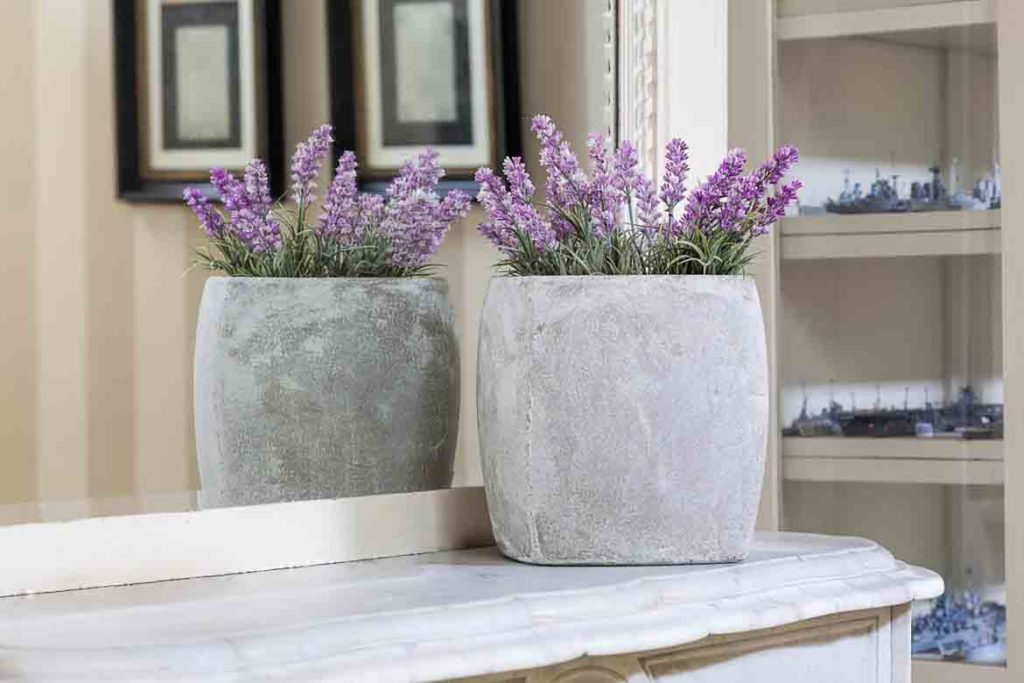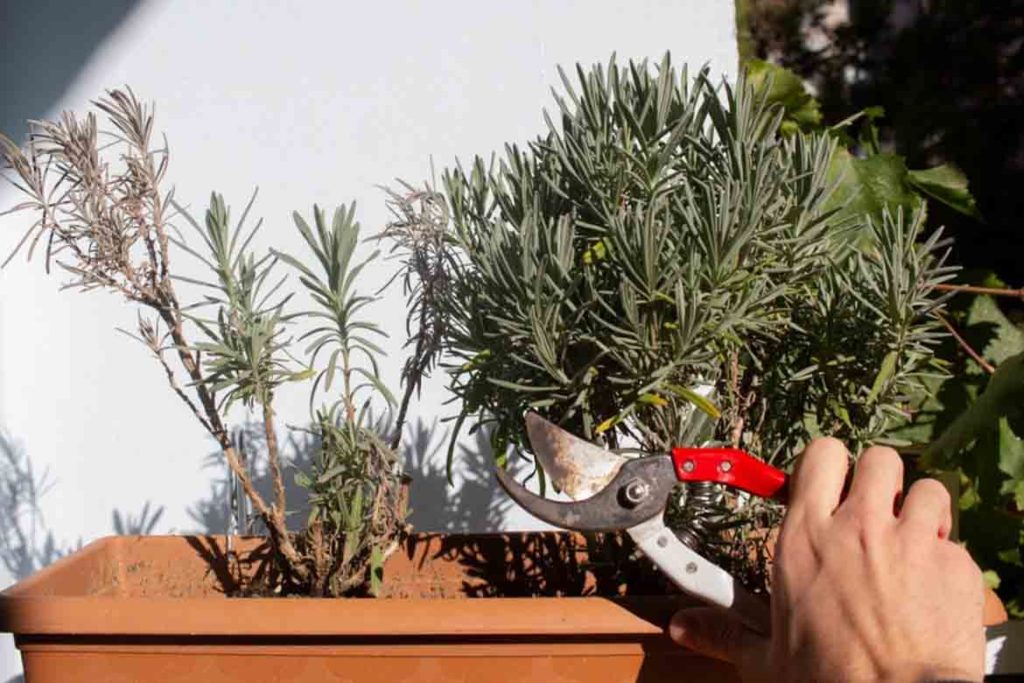
Lavender is a beautiful plant to keep inside the home. It is easy to grow, low-maintenance, and smells incredible.
30 September 2022

Lavender is a beautiful type (genus) of plant belonging to the mint family. There are 47 different species of Lavandula which can be found from Europe across to Northern and Eastern Africa, the Mediterranean, and Southwest Asia. Lavender is most recognisable for its iconic purple shade.
Lavender got its name from the Latin word ‘lavare,’ which means ‘to wash.’ Ancient Romans used the lavender plant to wash and scent their clothes, hair, homes. From there, lavender gradually became synonymous with the same shade of purple displayed by lavender flowers. That’s right – the colour was named after the purple flower plant!
Lavender does best in warm and moderately dry climates. Its Mediterranean origin means that it is partial to mild winters, sunny summers, and temperatures between 20-30 degrees Celsius. Lavender plants can flower and even thrive in Singapore, but you will have to take care with them during the cloudy and wet season as they are more fragile during these periods.
Where to buy a lavender plant Singapore? Lucky for you, there are many options. Whether you want a real lavender plant, lavender seeds, a lavender bouquet or even artificial lavender, the garden retailers of Singapore will not disappoint.
1. Lazada – Live lavender pot plant

Lazada is one of Singapore’s leading e-commerce companies providing affordable products in just about every sector you can think of. Their prices are among the best in Singapore, and that is certainly true for their live plant range. The live lavender plant pictured above is available here for $14.90. Begin your lavender journey today!
2. Vesta Market – French lavender 100 seeds

Perhaps you have a bit of a green thumb. If so, you might want to grow your lavender from scratch. Good news – it’s even more affordable! You can purchase 100 French Lavender seeds here from Vesta Market for just $3.50. With a little patience, you’re sure to end up with a huge lavender garden in full bloom. (Lavender blooms in its first year!)
3. Sage and Sill – Faux lavender

If the lavender look is all that you’re after, an artificial plant might be the way to go. Faux lavender will keep its flowers year round, and it doesn’t drop any pesky leaves. Sage and Sill provide gorgeously wrapped artificial lavender plants with magnetic backings – so they can stick to your fridge or whiteboard! Purchase here for $16.99.
4. Amazon – Freshly harvested lavender bouquet

The look and smell of lavender is beautiful, but sometimes taking care of the plant year-round is not an option. For those who want a lavender scented home, you may want to consider buying a bouquet of lavender flowers. You can buy a bundle of freshly picked lavender stems and flowers here from Amazon for just $28. They will make a wonderful addition to your home décor, and also make the perfect housewarming gifts.
Some types of lavender are more tolerant of the cold. Mostly, lavender thrives in warm, temperate climates. It is important to select your variety of lavender carefully; English lavender does not tolerate humid summers well, which makes it a delicate plant during Singapore’s hot seasons.
The best conditions for lavender plants are:
Lavender can be kept indoors or outdoors. However, bear in mind that lavender is one of the full sun plants that struggle to thrive in lowlight conditions.
Sunlight

Lavender needs to get at least six hours of full sun every day in order to stay healthy. If the climate is very hot, lavender may be able to tolerate shade. The main rule for keeping a lavender plant indoors is to make sure that it is placed in front of a window or door where it can be reached by sunlight. Lavender does best outdoors where it can receive direct, bright sunlight – a feature which makes it a popular choice for HDB balcony gardens.
Soil

Lavender needs well-drained soil to avoid root rot. It is very intolerant of excessive soil moisture and will die quickly without proper drainage. Slightly alkaline soil is the best type to promote lavender’s growth. An ideal soil pH is between 6.7 and 7.3. You can achieve this at home by incorporating some dolomite lime into acid soils.
Pot

Ceramic pots are the most popular pot choice for lavender. Ceramic pots tend to be thick, which helps to protect the plant from cold and dry heat. The pot must have proper drainage holes in the bottom.
Laying an inch of gravel at the bottom of the pot (underneath the soil) will help to promote the free movement of water out of the pot. Another good idea is to mount the pot on a stand or display rack so that the water does not pool around the pot. For a guide, check out the 20 best planters available in Singapore.
Water

The watering requirements of lavender plants depend on their age. After initially planting, you should water your lavender once or twice a week. Once the plants are established, they only need to be watered every two to three weeks. When you see buds forming, start watering the lavender once or twice a week again until harvesting the flowers.
Every lavender plant will have slightly different watering needs. A general rule of thumb, you should water lavender roughly whenever the soil has dried out from the last watering. However, don’t wait long enough for the plant to wilt.
Troubleshooting

Wilting or drooping is a sign of underwatering. Yellowing on the lower leaves usually indicates overwatering, as does leaf dropping, a rotting smell, and wet soil.
There are no end to the amount of interesting facts we can learn about plants. From their air purifying characteristics to their extraordinary growth abilities, even the most common house plants can surprise you. Whether you’re caring for a fiddle leaf fig or a hardy succulent, there is always something new to learn.
Like what you just read? Similar articles below

The brief was for a cosy and homely space, and OVON delivered it with finesse in this three-room BTO flat with pockets of greenery that bring the outdoors in.